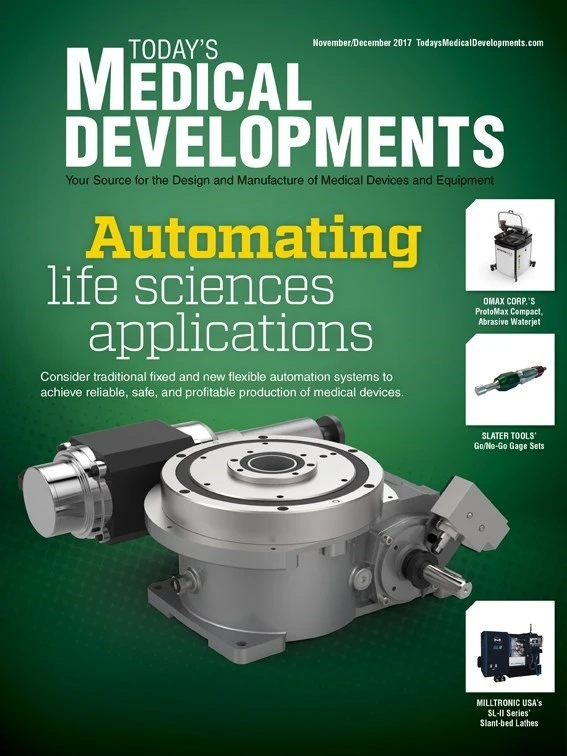
Nearly every day, from one of its seven nationwide manufacturing facilities, Wilbert Plastic Services ships a crucial part or assembly. That plastic piece may be a magnetic resonance or computed tomography cover, carefully designed and then thermoformed.
Headquartered in Belmont, North Carolina, with multiple manufacturing locations nationwide, Wilbert has weathered the recession, facility closures, new openings, and employee base growth to more than 1,400 as the company shows little sign of stopping. For the past 15 years, the company has served the medical market as one of more than a dozen industries for which the company has created plastic parts and assemblies for more than a half-century.
Wilbert Plastic Services’ achievements in the medical market are significant to the brand as are two of its manufacturing facilities – White Bear Lake, Minnesota, and Belmont.
Selecting the process
Wilbert’s designers and engineers help customers select the best process during a project’s initial stage – thermoforming or injection molding, two processes that yield different, but dependable results. For 90% of medical industry products produced, thermoforming fits the job.
In thermoforming, an already-created plastic sheet is heated until the sheet becomes pliable. The heated sheet is then formed into the desired object using a mold, then trimmed and cooled.
Compared to other processes, such as injection molding, thermoforming offers customers increased design flexibility, better performance, and stress-free molding.
“Thermoforming offers advantages such as recyclables, and better quality and consistency, and one thermoform tool can outlast the life of any program, delivering surface quality without paint and with serviceability,” says Randy Kress, Wilbert’s sales director for thermoforming.
Kress notes that while thermoforming extends to many industries, it is often used for magnetic resonance (MR) and computed tomography (CT) machine covers because they are traditionally lower volume. This, coupled with capital investment and the process’ ability to combine multiple parts into one, often makes thermoforming the go-to choice for medical customers.
However, it takes an experienced design and engineering team to guide customers toward the proper process, and much of Wilbert’s current medical work reaching the industry as a final product started as designs one or two years ago.

Collaboration required
Long before launch, Wilbert collaborates with customers to ensure thermoformed pieces are as perfect as possible from the drawing board.
“Today’s MR/CT covers include design work from Wilbert for manufacturability as well as changes to optimize material content and reduce cost and design of all fixtures, ensuring product quality and repeatability,” Kress notes.
These covers also incorporate fastening systems that hide all mechanical fasteners, a step beyond plastics. Cost savings are implemented throughout, as is tooling that incorporates undercuts. This results in rolled edges hidden from view, creating design freedom not typically achievable with thermoforming.
Other value-added components produced, created, and assembled by the Wilbert team for MR/CT enclosures include wire harnesses, lighting, paint, lasers, internal shielding, and kitting, rounding out a finished product before it reaches the customer. The collaboration results in a superior product and customer loyalty.
“We’re a make-to-order business,” says Wilbert CEO Greg M. Botner. “Customers appreciate our high-quality products and reputation, both of which were built during decades of work. We’ve invested heavily in developing these aspects of our business and consistently produce plastic parts that they can depend on.”
That dependability has helped the company grow, Kress says, noting “Our medical business has grown by increasing content with current customers and adding new customers who are leaders in their market space. Changes in material offerings have allowed us to offer product enhancements not available by processes other than thermoforming.”
Kress attributes the company’s ability to excel in serving the medical plastics market to the various enhancements available today, such as A surfaces, co-extruded appliques, and high-quality color films or color monolithic sheets.
“Wilbert’s advancements in tooling design allow us to thermoform products that historically couldn’t be produced in thermoforming. In addition, our in-house fixture designs allow us to incorporate hundreds of components into our assemblies without jeopardizing quality.”
Kress notes that the company’s medical field capabilities far exceed plastics, as engineers regularly incorporate multiple processes, materials, and components into high-level assemblies, such as electronic carts or incubators for medical use.
Shipping between 500,000 to 600,000 parts and assemblies daily from its seven plants, Wilbert engineers work to guide all clients from design to a finished piece.
“Our products are not available on store shelves or online,” Botner says. “These products and assemblies are individually designed with customer goals at the forefront. We’re an essential part of what makes a better product.”
Wilbert Plastic Services
www.wilbertplastics.com

Explore the November December 2017 Issue
Check out more from this issue and find your next story to read.
Latest from Today's Medical Developments
- Arcline to sell Medical Manufacturing Technologies to Perimeter Solutions
- Decline in German machine tool orders bottoming out
- Analysis, trends, and forecasts for the future of additive manufacturing
- BlueForge Alliance Webinar Series Part III: Integrate Nationally, Catalyze Locally
- Robot orders accelerate in Q3
- Pro Shrink TubeChiller makes shrink-fit tool holding safer, easier
- Revolutionizing biocompatibility: The role of amnion in next-generation medical devices
- #56 Lunch + Learn Podcast with Techman Robot + AMET Inc.





